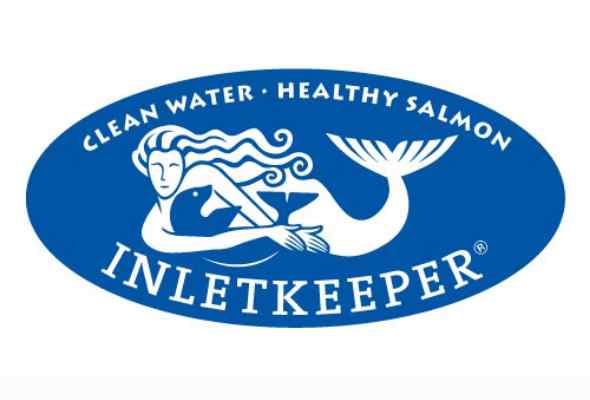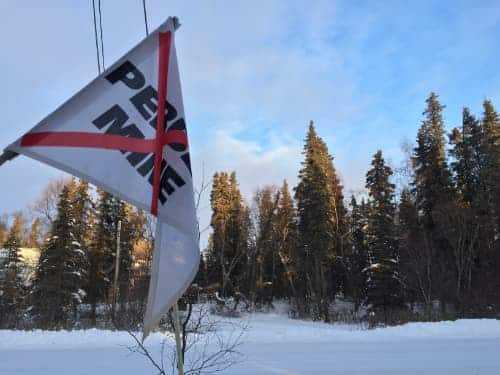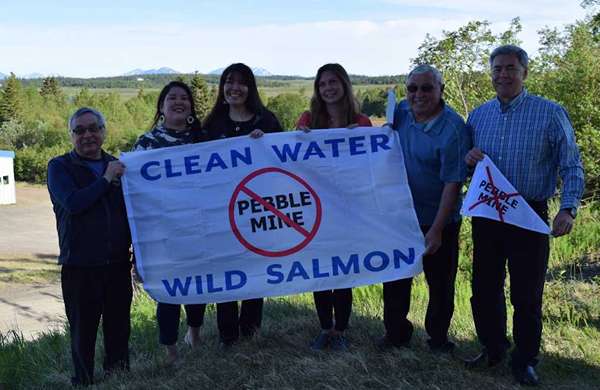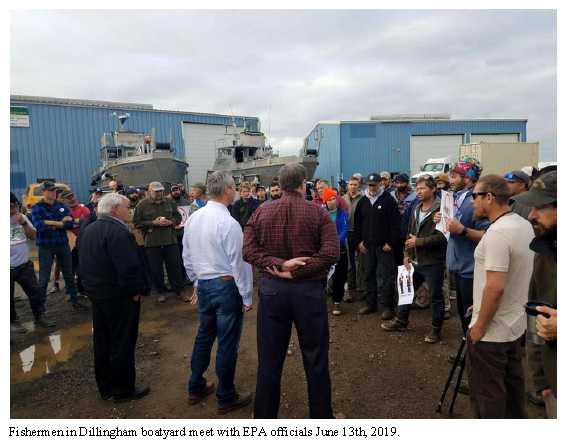Former Rio Tinto permitting expert concludes that proposed mine is “almost certainly not economically feasible,” with an estimated strongly negative net present value of -$3 billion.
Why has the Pebble Partnership (“Pebble”) so stubbornly refused to provide a financial assessment in support of its permit application for the embattled mine it proposes to build in the headwaters of Bristol Bay, Alaska? The federal permitting agency’s contractor AECOM has asked for it. The people of Bristol Bay have asked for it. NRDC has asked for it. And Pebble has refused.
Now we may know why.
In an extraordinary March 28, 2019 letter entitled “Pebble Mine Economics”—linked in its entirety here—former longtime Rio Tinto mine permitting expert Richard Borden has provided to the U.S. Army Corps of Engineers his review and unequivocally negative assessment of the financial feasibility of the embattled project. Noting with concern Pebble’s continuing refusal to submit a preliminary financial assessment in support of its application, Borden prepared his own assessment, offering two important general conclusions:
- that the project as proposed for permitting is “almost certainly not economically feasible” and is “likely to have a strongly negative net present value (NPV),” and
- that Pebble’s refusal to share any capital cost information threatens to compromise the “technical rigor and integrity” of the EIS process, and he urged Pebble to provide that information.
There is no denying that, given Borden’s background and expertise, he is an unimpeachable, uniquely knowledgeable voice on the subject mining economics. In 23 years with Rio Tinto, Borden has participated in and contributed to more than twenty financial and technical assessments of new major capital projects and potential acquisitions. He has performed environmental and permitting work at over fifty mines, projects and operations, including over seven years as Head of Environment for Rio Tinto’s Copper, Copper & Diamonds and Copper & Coal Product Groups.
[content id=”79272″]
In the letter, Borden combines publicly available information about the current Pebble Mine plan with Pebble’s own financial assumptions reflected in a 2011 preliminary economic assessment (called the “Wardrop Report”)—a report estimating costs for a range of mine plans at Pebble, with the smallest being a 25-year mine. On that basis, he addresses a range of significant financial factors for the current mine plan, including potential capital construction costs, operational and closure costs, water treatment costs, infrastructure funding, project ore feed and contained metal, sensitivity of the setting, and, at a conceptual level, the project’s estimated net present value.
He characterizes the Pebble project as “an extremely large and risky capital investment” and makes a number of observations significantly at odds with Pebble’s assertion that the project is financially viable.
Here are a few key excerpts from Borden’s letter:
- “The EIS mine plan will make roughly 15 billion dollars less profit from the sale of concentrate than the smallest 2011 mine scenario and is likely to have a strongly negative net present value (NPV).”
- “Pebble’s assumed construction costs of $4.7 billion are anomalously low compared to other large copper mines that have been studied or built over the past five to ten years.” (Borden cites, for example, Oyu Tolgoi copper mine in Mongolia ($6.0 billion), Las Bambas copper mine in Peru (more than 7.0 billion), Cobre Panama copper mine (about $6.0 billion), and Donlin gold mine in Alaska ($7.0 billion).
- “Part of the apparent discrepancy in capital cost can be attributed to the removal of $1.3 billion in capital” based on the assumption that the transportation corridor (port and road) and the power plant would be paid through unspecified “strategic partnerships,” perhaps assuming speculative public funding.
- Actual construction costs “could be significantly greater than six billion”—perhaps up to 10 billion. “In every analog case cited above, 1) the design ore throughput is less than what was proposed in the 2011 study at Pebble, 2) the analogs in many cases are located closer to existing infrastructure, and, perhaps most importantly, 3) none of them is located in as sensitive an environmental setting as Pebble.”
- “The value per ton of ore mined by the 20-year EIS plan is about 21% lower than the average ore mined in the [2011] 25-year plan. The total mass of all copper, gold, and molybdenum produced is almost half. This has a profound negative impact on the likely economics of the mine being evaluated by the EIS.”
- “The mine currently being evaluated in the EIS process makes $15 billion less profit from concentrate sales. When this difference is apportioned by year and a discount rate of seven percent per year is applied, this equates to a five billion dollar reduction in NPV between the 25-year plan evaluated in 2011 and the 20-year EIS case.”
- “By necessity, Pebble has proposed a very costly and complex multistage water treatment process which to my knowledge has not been attempted for such high flows anywhere else in the world. . . . Applying a seven percent discount rate to these values during operation and to the first hundred years after closure yields an NPV cost which is approximately $400 million higher for the life of mine project than assumed in 2011.”
- “When the higher construction costs; higher operational and closure expenditures for water treatment; and much lower revenue from concentrate sales are factored into the Wardrop study’s 25-year mine plan economic evaluation, the 20-year mine plan being considered by the Pebble EIS has a negative NPV of approximately three billion dollars.”
Based on his analysis, Borden offers a warning to Pebble, to the Army Corps, and to the public generally if the Pebble Mine is not financially feasible:
If the base case mine plan assumed for the EIS is not economic, then the entire permitting process risks being compromised because the impacts and risks being evaluated are much smaller than those required for a full-scale economically viable project. In other words, the EIS is not evaluating the “least environmentally damaging practicable alternative(emphasis added).
Since financial viability is a key element of the permitting standard for any mining project, an inability to demonstrate the Pebble Mine’s viability is significant in terms of financial risk to investors and legal risk to the project as a whole.
As Borden goes on to explain, this omission has important practical implications as well for potential developers of the project, leading necessarily to the expansion of the project, its impacts, and its risk:
In order to create a profitable operation they would either need to 1) immediately begin a new EIS for a larger economically viable mine plan or 2) knowingly permit, fund and build an uneconomic mine in the hopes that a later EIS and permitting process would allow a larger, economically viable operation.
In either case, Borden continues:
In other words, to make a profit – or even to recoup the necessary financial investment for construction and operation – developers would be compelled to immediately begin the process of expanding the permitted mine plan, leading to an accompanying significant increase in size, waste, disturbed footprint – and risk.
And for the Army Corps specifically, a meaningful “options analysis” is dependent on an assessment of the relative costs and revenue:
At a minimum relative capital costs for different development and design options need to be evaluated by the Army Corps of Engineers so a meaningful options analysis can be conducted on practicable alternatives.
Borden urges Pebble to provide that information “to help ensure the integrity of the EIS process and in fairness to local communities, the State of Alaska and to shareholders.”
Even with a “new rigorous economic evaluation” would provide, Borden is pessimistic about Pebble’s financial viability. While he says it may make the net present value “less or more negative,” he believes that “it is very unlikely to make the project have a positive rate of return on what is likely to be an extremely large and risky capital investment.”
All of this underscores how important it is for the Army Corps to require, as a condition of proceeding with permitting review, that Pebble immediately provide—for public review as part of the DEIS process—an objective financial assessment of its project. A continuing failure to do so, disregarding repeated stakeholder requests both to Pebble and to the Army Corps by a range of stakeholders, is an abdication of the agency’s regulatory responsibility, a breach of faith with the people of Bristol Bay, and a prescription for disaster in the world’s most productive wild salmon fishery.

Image-Robert Glenn Ketchum








